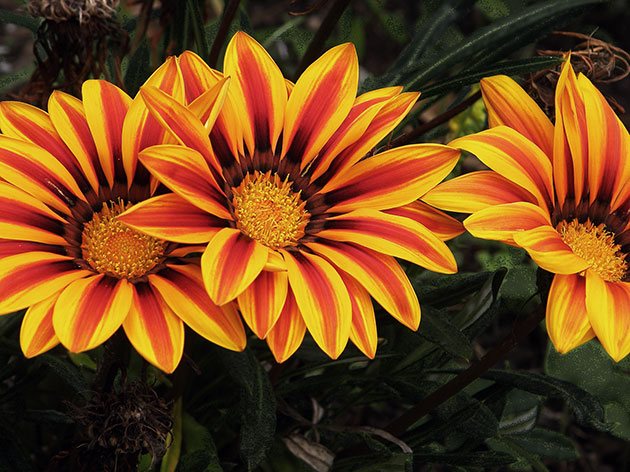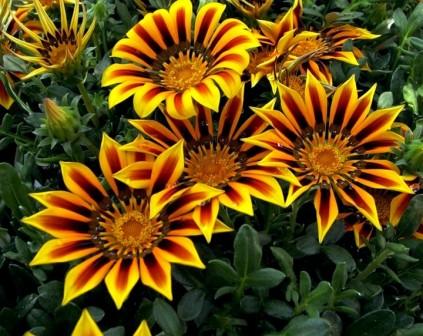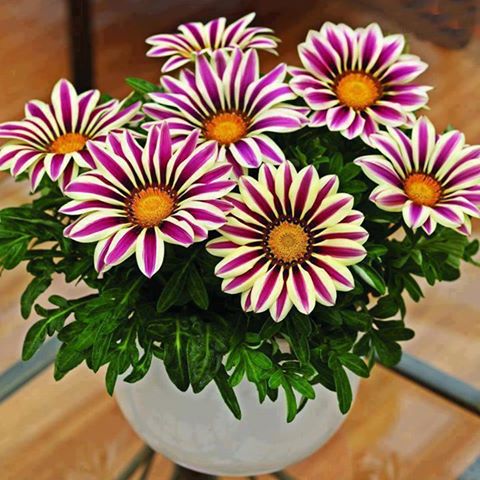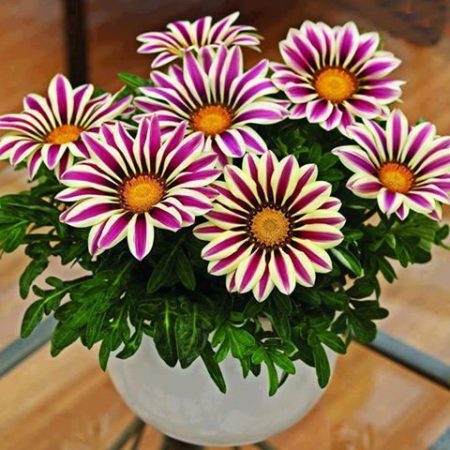 It is not uncommon for many of the gardeners to call the plant gatsaniyu African chamomile. This charming flower belongs to the Astrov family, so visually it really is very similar to a chamomile. Over 40 varieties of this plant are observed, which have different colors and sizes of their buds.
It is not uncommon for many of the gardeners to call the plant gatsaniyu African chamomile. This charming flower belongs to the Astrov family, so visually it really is very similar to a chamomile. Over 40 varieties of this plant are observed, which have different colors and sizes of their buds.
African chamomile, as is already known, can be both an annual plant and a perennial. In many ways, of course, it all depends on the variety of the given culture. This low-growing plant reaches a height of no more than 30-40 centimeters. The leaves of the flower are collected in small sockets. The stem can be quite short, but usually it is not visible behind the leaves. Inflorescences of the plant resemble baskets, which consist of reed flowers.
Gatzania: growing from seeds when planting excites many gardeners, because everyone wants to decorate their garden or flower bed with this charming plant. This culture has found wide application among lovers of gardeners, because such flowers are able to cheer up and decorate any land.
Today, many summer residents grow African chamomile seedlings. You can do this at home on the windowsill or in the greenhouse, if, of course, it is available. The timing of sowing seeds largely depends on the selected region. After all, as you know, the temperature regime is very important for this plant.
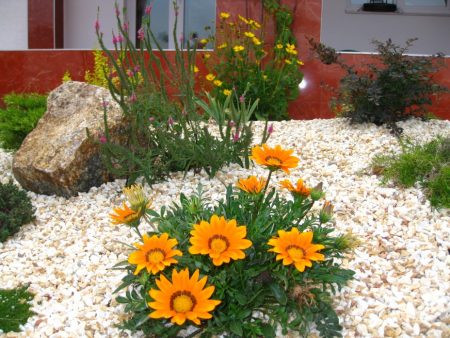
If late, cold spring is observed on the street, then it is worth noting that when the first seedlings of seeds appear, they will need additional lighting, since the plant needs a lot of light. Otherwise, the seedlings will turn out weak and will stretch up. It is also noted that it is not rare that such seedlings simply die.
Usually sowing seeds is carried out in May, but you can sow earlier if you can provide the necessary conditions, that is, create additional lighting and temperature conditions. Some lovers make several visits sowing seeds, that is, some are sown in April, and others in May.
This is done in order to plant gatzany in the open ground earlier, because then they will bloom earlier. But with such seedlings, of course, you have to tinker with, because additional care for growing is required. For those who can not provide additional care for this crop, the most suitable time for sowing will be the middle or end of May, because there is already enough sun, and you should not be afraid of cold weather.
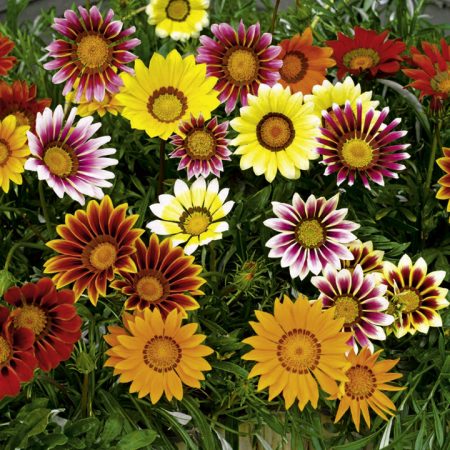
Before you start sowing seeds, you need to prepare deep boxes, because this plant needs the root to grow freely, without bending to the sides. Also, this culture needs to properly prepare the ground, it must be loose and light. Additionally, some growers pre-treat the prepared soil with a weak solution of potassium permanganate for disinfection.
After all this is done, the seeds need to be staggered, but do not sow them too close, the plant does not like it. Then the seeds are lightly sprinkled with additional soil and spilled with water at room temperature. Watering should be from a watering can, so as not to move or wash the seeds from the ground.
Some experts advise covering the seeds with a film after sowing, then the germination rate increases and accelerates, but every day it is necessary to remove the accumulated condensate. A warm bright place will help to emerge in a couple of weeks. Moreover, under the film, the earth will not dry, which will beneficially affect the germination of sprouts.
With this approach, the seedlings do not have to dive, but if the seeds were not sown in deep boxes and often, then seedlings must be peaked after the appearance of 4 leaves. Florists usually carry out such work in special peat pots, which are then put in a cooler place.
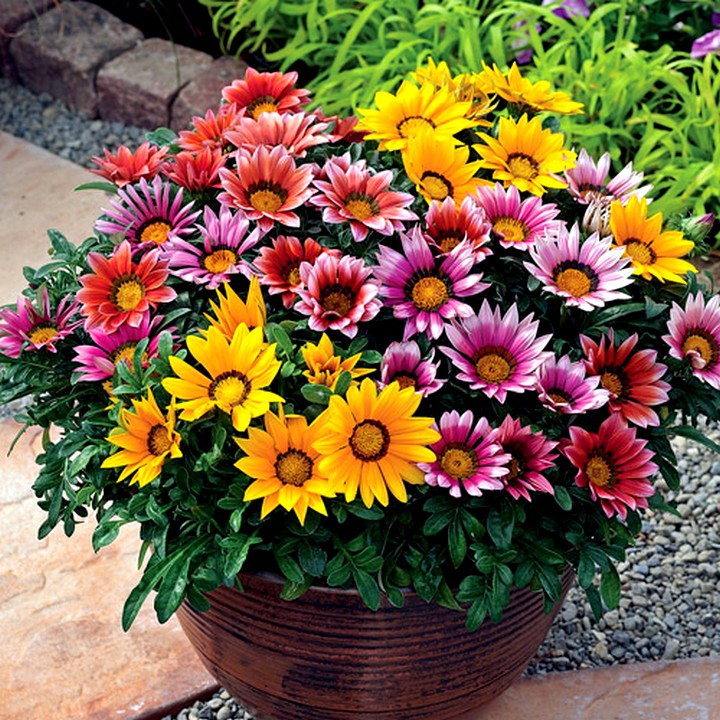
If seedlings are grown at home, then a balcony is great, there the temperature is acceptable and the lighting is good. Over time, you need to open the windows to temper the plants, but you must ensure that the seedlings are not in a draft, otherwise it may die.
Such seedlings can be planted in open ground already in early June. But it should be borne in mind that this plant is quite thermophilic and does not like dense soil. That is, it will be necessary to create as much sun as possible and fertile nutrient land, in which the root system will quickly take root and the plant will be less sick. It should be noted that gatsaniya is not afraid of drought and direct sunlight, but on the contrary she even loves it.
If the seeds were sown in peat pots, then they are planted directly in them without extracting the plant, but if the seedlings are taken from a deep box, then you should use a long scoop so as not to disturb the root system of the plant, otherwise it will die. The distance when planting in open ground with each other should be at least 20 centimeters, otherwise the plant will be crowded.
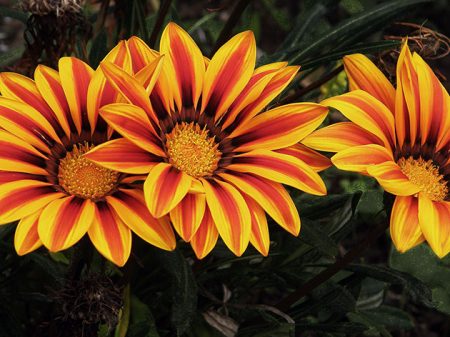
If you violate the root system or plant plants too close, then it will hurt, and the formation of buds may be delayed. Therefore, some flower growers advise transferring seedlings along with a lump of land in which seedlings grew, then such troubles can be avoided.
Drained soil and good lighting will help the flower to quickly take root and release buds. Also, gatsaniya will not tolerate the appearance of weeds, they must be removed otherwise the flower will not receive proper nutrition. The soil must be watered and loosened in a timely manner so that the roots of the plant can “breathe”. It should also be noted that the African chamomile does not like wilted inflorescences, they must be removed during the time, then the plant quickly releases new buds and blooms profusely.
Proper care, a lot of sun will provide the plant with the most necessary conditions for growth and flowering, and for this she will thank her hosts with warm shades of beautiful buds that will not only help to enjoy the charming appearance of the plant, but will cheer up every day. In conjunction with kohii such a duet will look original.

